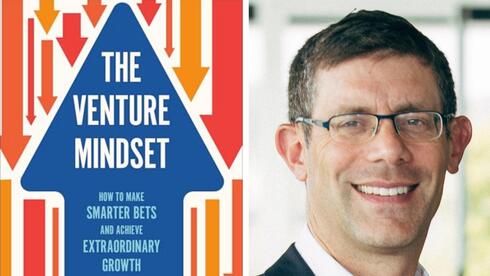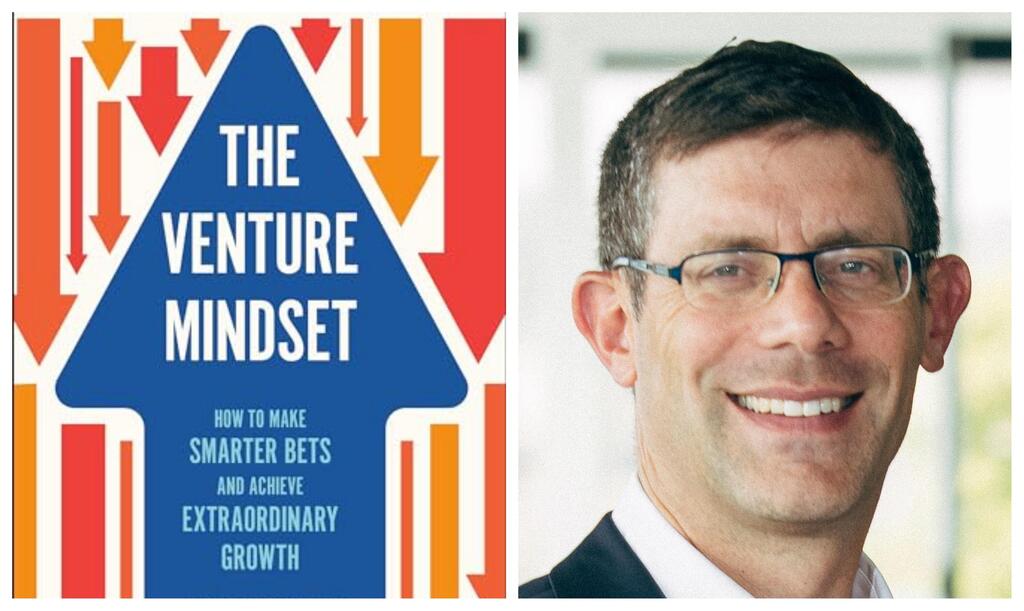CTech’s Book Review: How to Understand the Investor Mindset

Ben Wiener is managing partner at Jumpspeed Ventures, a venture capital fund that invests in early-stage startups emerging from Jerusalem’s startup ecosystem. He joined CTech to publish a review of “The Venture Mindset: How to Make Smarter Bets and Achieve Extraordinary Growth” by Ilya Strebulaev and Alex Dang.
Title: The Venture Mindset: How to Bet Smarter and Achieve Exceptional Growth
Author: Ilya Strebulaev and Alex Dang
Format: Book
Where: Other
1 View gallery


Ben Wiener, Managing Partner at Jumpspeed Ventures
(Photo: N/A / Amazon)
In The Venture Mindset, Strebulaev, founder of the Venture Capital Initiative and professor of private equity and finance at Stanford University’s Graduate School of Business, and Deng, a technology executive and former McKinsey partner, share their decades of experience studying venture capitalists’ processes and decision-making. The Venture Mindset seeks to identify and promote the venture capitalist’s normative approach to risk-based strategic decision-making as an alternative to conservative, cautious corporate governance. In doing so, it also serves as a fantastic guide for both venture capitalists interested in self-assessment and founders who want to understand how a typical venture capitalist would evaluate their startup.
The authors focus primarily on analyzing and explaining how venture capitalists source, evaluate, and select investments. In this respect, I think the book is a kind of mirror image of Peter Thiel’s famous “Zero to One,” which is aimed at aspiring founders and teaches them how to “idea-build” and identify a worthwhile company. “The Venture Mindset” puts the reader in the shoes of investors and tries to show how funders determine which companies are worthy of investment.
The authors’ main goal is to foster a venture capital mindset throughout the company’s culture. As one might imagine, such a mindset involves taking more risks, challenging the status quo, and constantly looking for new areas of activity or growth. But the authors do a good job of digging deeper into the mindset of the typical venture capitalist and presenting a thorough profile of venture capitalist behavior that represents anything but freewheeling, shooting-for-the-stars bets. The book presents venture capital investing as a model of heuristic risk assessment that focuses on identifying and filtering out unacceptable risks and taking calculated risks.
The Venture Mindset combines rigorous academic research and McKinsey-style case studies with easy-to-understand and straightforward strategic insights and guidance, resulting in informative, thought-provoking and actionable results.
The Venture Mindset covers a lot of ground and is worth a full read. Below are just a few of the insights that stood out to me while reading the book.
-
The “Red Flag” Mindset: Typical venture capitalists evaluate many opportunities to find one worth investing in. The authors confirm the proverbial “100:10:1” ratio—out of a hundred startups you look at, ten are closely evaluated and one receives investment. This evaluation or filtering process is driven by what the authors call a “red flag” mindset; investors perform heuristic pattern matching. The authors refer to venture capitalists as “risk reduction engineers.” Knowing they need to see a hundred opportunities to find an investment, investors try to identify “red flags” in a pitch that correspond to recognizable patterns of startup failure and use these negative indicators to move on to other opportunities as quickly as possible. In my view, many founders are unaware that this is happening in the investor’s mind as they deliver their pitch from the other side of the table. It can often be beneficial for a founder to think about the elements that might be most important to an investor and address them directly in the pitch.
-
Another issue worth mentioning is the authors’ position (or lack thereof) on a classic debate in venture capital: is the team most important or the market? In his famous 2007 essay “The Only Thing That Matters,” Marc Andreessen clearly emerged as the leader of the “market” camp, citing legendary investor Andy Rachleff’s “Law of Startup Success,” which states that “the market wins.” “The Venture Mindset” claims that 47% of venture capitalists say “the team” is most important in their analysis. Yet later, the authors cite Rachleff’s “Law of Startup Success.” I think this is not a contradiction, but rather shows that the debate is not over yet. Even though there is a “venture mindset” in general, individual investors are like snowflakes and apply the mindset differently.
Who should read this book:
The book is often aimed at “traditional” corporate leaders, encouraging them to abandon old ways of evaluating business opportunities and develop a “venture mindset.” However, I believe “The Venture Mindset” should be read by startup founders as it provides valuable insight into the thought processes of many investors they will encounter. Venture capitalists can also use the book to self-examine their processes and should read it carefully to determine whether or not they support each of the normative VC behaviors described in the book.
Watch a recorded episode of CTech’s BiblioTech series below:


